An Ecological and Evolutionary Approach
C. Barry Cox
Former Head of Biological Sciences, King’s College London, UK
Richard J. Ladle
Titular Professor of Conservation Biogeography, Federal University of Alagoas, Brazil
Peter D. Moore
Emeritus Reader in Ecology, King’s College London, UK
TENTH EDITION
This edition first published 2020
© 2020 John Wiley & Sons Ltd
Edition History
2016, 2010, 2005, 2000, 1993, 1985, 1980, 1976, 1973 published by John Wiley & Sons, Inc
All rights reserved. No part of this publication may be reproduced, stored in a retrieval system, or transmitted, in any form or by any means, electronic, mechanical, photocopying, recording or otherwise, except as permitted by law. Advice on how to obtain permission to reuse material from this title is available at http://www.wiley.com/go/permissions.
The right of C. Barry Cox, Richard J. Ladle and Peter D. Moore to be identified as the authors of this work has been asserted in accordance with law.
Registered Office(s)
John Wiley & Sons, Inc., 111 River Street, Hoboken, NJ 07030, USA
John Wiley & Sons Ltd, The Atrium, Southern Gate, Chichester, West Sussex, PO19 8SQ, UK
Wiley‐VCH Verlag GmbH & Co. KGaA, Boschstr. 12, 69469 Weinheim, Germany
John Wiley & Sons Singapore Pte. Ltd, 1 Fusionopolis Walk, #07‐01 Solaris South Tower, Singapore 138628
Editorial Office
9600 Garsington Road, Oxford, OX4 2DQ, UK
For details of our global editorial offices, customer services, and more information about Wiley products visit us at www.wiley.com.
Wiley also publishes its books in a variety of electronic formats and by print‐on‐demand. Some content that appears in standard print versions of this book may not be available in other formats.
Limit of Liability/Disclaimer of Warranty
While the publisher and authors have used their best efforts in preparing this work, they make no representations or warranties with respect to the accuracy or completeness of the contents of this work and specifically disclaim all warranties, including without limitation any implied warranties of merchantability or fitness for a particular purpose. No warranty may be created or extended by sales representatives, written sales materials or promotional statements for this work. The fact that an organization, website, or product is referred to in this work as a citation and/or potential source of further information does not mean that the publisher and authors endorse the information or services the organization, website, or product may provide or recommendations it may make. This work is sold with the understanding that the publisher is not engaged in rendering professional services. The advice and strategies contained herein may not be suitable for your situation. You should consult with a specialist where appropriate. Further, readers should be aware that websites listed in this work may have changed or disappeared between when this work was written and when it is read. Neither the publisher nor authors shall be liable for any loss of profit or any other commercial damages, including but not limited to special, incidental, consequential, or other damages.
Library of Congress Cataloging‐in‐Publication
Data
Names: Cox, C. Barry (Christopher Barry), 1931– author. | Ladle, Richard J., author. | Moore, Peter D., author. Title: Biogeography : an ecological and evolutionary approach / C. Barry Cox, Former Head of Biological Sciences, King’s College London, UK, Richard J. Ladle, Titular Professor of Conservation Biogeography, Federal University of Alagoas, Brazil, Peter D. Moore, Emeritus Reader in Ecology, King’s College London, UK.
Description: Tenth edition. | Hoboken, NJ : Wiley, 2020. | Includes bibliographical references and index.
Identifiers: LCCN 2019045092 (print) | LCCN 2019045093 (ebook) | ISBN 9781119486312 (paperback) | ISBN 9781119486848 (adobe pdf) | ISBN 9781119486855 (epub)
Subjects: LCSH: Biogeography.
Classification: LCC QH84 .C65 2020 (print) | LCC QH84 (ebook) | DDC 577.2/2–dc23
LC record available at https://lccn.loc.gov/2019045092
LC ebook record available at https://lccn.loc.gov/2019045093
Cover image: Chad Ehlers / Alamy Stock Photo
Cover design by Wiley
Set in 9/11.5 pt Trump Mediaeval by SPi Global, Pondicherry, India
I dedicate this book to the two wives who tolerated and supported the major demands that writing the ten successive editions of this book made to our lives
Sheila Cox (d. 1996)
Marie‐Hélène Cox
Preface xiii
Acknowledgements xv
1 Introduction 1
Lessons from the Past 1
Ecological versus Historical Biogeography, and Plants versus Animals 4
Biogeography and Creation 5
The Distribution of Life Today 7
Evolution – a Flawed and Dangerous Idea! 8
Enter Darwin – and Wallace 10
World Maps – the Biogeographical Regions of Plants and Animals 13
Getting Around the World 15
The Origins of Modern Historical Biogeography 20
The Development of Ecological Biogeography 23
Living Together 24
Marine Biogeography 27
Island Biogeography 28
Biogeography Today 30
SECTION I: THE CHALLENGE OF EXISTING 37
2 Patterns of Distribution: Finding a Home 39
Limits of Distribution 42
The Niche 44
Overcoming the Barriers 45
Climatic Limits: The Palms 46
A Successful Family: The Daisies (Asteraceae) 48
Patterns Among Plovers 51
Magnolias: Evolutionary Relicts 55
The Strange Case of the Testate Amoeba 57
Climatic Relicts 58
Topographical Limits and Endemism 65
Physical Limits 67
Species Interactions: A Case of the Blues 73
Competition 75
Reducing Competition 76
Predators and Prey, Parasites and Hosts 79
Migration 83
Invasion 85
3 Communities and Ecosystems: Living Together 97
The Community 97
The Ecosystem 100
Ecosystems and Species Diversity 103
Biotic Assemblages on a Global Scale 108
Mountain Biomes 112
Global Patterns of Climate 116
Climate Diagrams 119
Modelling Biomes and Climate 122
4 Patterns of Biodiversity 127
Measuring Biodiversity: How Many Species are There? 128
Latitudinal Gradients of Diversity 132
Is Evolution Faster in the Tropics? 139
The Legacy of Glaciation 141
Latitude and Species Ranges 142
Diversity and Altitude 143
Biodiversity Hotspots 146
Diversity in Space and Time 148
The Intermediate Disturbance Hypothesis 151
Dynamic Biodiversity and Neutral Theory 151
SECTION II: THE ENGINES OF THE PLANET 157
5 Plate Tectonics 159
The Evidence for Plate Tectonics 159
Changing Patterns of Continents 164
How Plate Tectonics Changes the World 164
Islands and Plate Tectonics 172
Terranes 174
6 Evolution, the Source of Novelty 179
The Origin of Novelty 179
From Populations to Species 180
Sympatry versus Allopatry 183
Defining the Species 188
Microevolution versus Macroevolution 189
Adaptive Radiations 189
Naming and Cataloguing the Living World 189
Charting the Course of Evolution 190
Morphology Gives Way to Molecules 193
Darwin’s Finches Updated 194
SECTION III: ISLANDS AND OCEANS 197
7 Life, Death and Evolution on Islands 199
Types of Island 200
Getting There: The Challenges of Arriving 200
Dying There: The Problems of Survival 202
Adapting and Evolving 203
The Hawaiian Islands 206
Integrating the Data: The Theory of Island Biogeography 214
Modifying the Theory 216
The General Dynamic Model for Oceanic Island Biogeography 219
Nestedness 221
Living Together: Incidence and Assembly Rules 221
Building an Ecosystem: The History of Rakata 223
8 Patterns in the Oceans 235
Zones in the Ocean and on the Sea Floor 237
Basic Biogeography of the Seas 240
The Open‐Sea Environment 240
The Ocean Floor 246
The Shallow‐Sea Environment 250
And Finally … Marine Biogeographical Realms of the World 263
SECTION IV: HISTORICAL BIOGEOGRAPHY 269
9 From Evolution to Patterns of Life 271
Studying the Patterns 272
Methods of Analyzing the Patterns 273
Studying Organisms and their Molecules 287
An Integrative Approach to Historical Biogeography 290
Investigating the More Distant Past 292
10 Geography, Life and Climates Through Time 299
Introduction 299
Early Land Life on the Moving Continents 300
Animal Life Through the Mesozoic 304
The End of the Mesozoic World 308
Climates and Plants Through Time 309
Reconstructing Plant Life and Biomes 310
Evolution of the Mammals 318
The Mesozoic Roots of the Radiation of Modern Mammals 320
11 Patterns of Life Today 327
The Biogeographical Regions Today 327
The History of Today’s Biogeographical Regions 334
The Old World Tropics: Africa, India and Southeast Asia 334
Australia 342
New Caledonia 345
New Zealand 346
The West Indies 348
South America 351
The Northern Hemisphere: Holarctic Mammals and Boreal Plants 359
12 The Arrival of the Ice Ages 367
Climatic Wiggles 368
Interglacials and Interstadials 369
Biological Changes in the Pleistocene 371
The Last Glacial 375
Causes of Glaciation 382
The Current Interglacial: A False Start 388
Forests on the Move 390
The Dry Lands 393
Changing Sea Levels 396
A Time of Warmth 398
Climatic Cooling 399
Recorded History 400
Atmosphere and Oceans: Short‐Term
Climate Change 402
The Future 403
SECTION V: PEOPLE AND PROBLEMS 409
13 The Human Intrusion 411
The Emergence of Humans 411
Modern Humans and the Megafaunal Extinctions 420
Plant Domestication and Agriculture 423
Animal Domestication 428
The Diversification of Homo sapiens 430
The Biogeography of Human Parasitic Diseases 431
The Environmental Impact of Early Human Cultures 434
14 Conservation Biogeography 439
Welcome to the Anthropocene 439
The Sixth Mass Extinction? 440
Less, and Less Interesting 444
What’s Behind the Biodiversity Crisis? 445
Crisis Management: Responding to Biodiversity Loss 451
The Birth of Conservation Biogeography 452
The Scope of Conservation Biogeography 453
Conservation Biogeography in Action 459
The Future is Digital 462
Conclusions 463
Glossary 471
Index 481
Colour plates between pages 240 and 241
Chapter 1
evolution is still controversial today in some societies and communities. The history of scientific debate is rarely, if ever, one of dispassionate, unemotional evaluation of new ideas, particularly if they conflict with one’s own. Scientists, like all men and women, are the product of their upbringing and experience, affected by their political and religious beliefs (or disbeliefs), by their position in society, by their own previous judgements and publicly expressed opinions, and by their ambitions – just as ‘There’s no business like show business’, there’s no interest like self‐interest! Very good examples of this, discussed later in this chapter, is the use of the concept of evolution by the rising middle‐class scientists of England as a weapon against the 19th‐century establishment while, at the individual level, the history of Leon Croizat and his ideas provides an interesting study.
In looking at the past, we shall therefore see people who, like most of us, grew up accepting the intellectual and religious ideas current in their time, but who also had the curiosity to ask questions of the world of nature around them. Sometimes the only answers that they could find contradicted or challenged the current ideas, and it was only natural then to seek ways to circumvent the problem. Could these ideas be reinterpreted to avoid the problem, was there any way, any loophole, to avoid a complete and direct challenge and rejection of what everyone else seemed to accept? So, to begin with, the reactions of any scientist
Biogeography: An Ecological and Evolutionary Approach, Tenth Edition. C. Barry Cox, Richard J. Ladle, and Peter D. Moore. © 2020 John Wiley & Sons Ltd.
confronted with results or ideas that conflict with what is currently accepted is either to reject them (‘Something must have gone wrong with his methods, or with my methods’) or to view them as an exception (‘Well, that’s interesting, but it’s not mainstream’). Sometimes, however, these difficulties and ‘exceptions’ start to become too numerous, too varied or to arise from so many different parts of science as to suggest that something must be wrong. The scientist may then realize that the only way around it is to start again, starting from a completely different set of assumptions, and to see where that leads. Such a course is not easy, for it involves the tearing‐up of everything that one has previously assumed, and completely reworking the data. And, of course, the older you get, the more difficult it is to do so, for you have spent a longer time using the older ideas and publishing research that explicitly or implicitly accepts them. That is why, all too often, older workers take the lead in rejecting new ideas, for they see them as attacking their own status as senior, respected figures. Sometimes these workers also refuse to accept and to use new approaches long after these have been thoroughly validated and widely used by their younger colleagues (see attitudes to plate tectonic theory, Chapter 5).
Another problem is that the debate can become polarized, with the supporters of two contrasting ideas being concerned merely to try to prove that the opponents’ ideas are false, badly constructed and untrue (see dispersal vs. vicariance, discussed later in this chapter, and punctuated vs. gradual evolution, discussed in Chapter 6). Neither side then stops to consider whether it is perhaps possible that both of the apparently conflicting ideas are true, and that the debate should instead be about when, under what circumstances and to what extent one idea is valid, and when the other is instead the more important. Also, only too often, scientists have rejected the suggestions of another worker, not because they were in themselves unacceptable, but because they rejected other opinions of that same author (e.g. Cuvier vs. Lamarck on evolution, later in this chapter).
It is often valuable to think about why and when a particular advance was made. Was it the result of personal courage in confronting the current orthodoxy of religion or science? Was it
the result of the mere accumulation of data, or was it allowed by the development of new techniques in the field of research, or in a neighbouring field, or by a new intellectual permissiveness? But the study of history also gives us the opportunity to learn other lessons – and the first of these is humility. We must be wary, when considering the ideas of earlier workers, not to fall into the trap of arrogantly dismissing those workers as in some way inferior to ourselves, simply because they did not perceive the ‘truths’ that we now see so clearly. In studying their ideas and suggestions, one soon realizes that their intellect was no less penetrating than those that we can see at work today. However, compared to the scientists of today, they were handicapped by lack of knowledge, for less was known and understood. For example, the French zoologist Lamarck suggested in 1809 that the long neck of a giraffe was the result of its ancestors having stretched their necks in order to reach high vegetation, and that this change had been inherited by their descendants – a theory known as the ‘inheritance of acquired characteristics’. We now know that this is incorrect, and that it is instead the result of natural selection of those individuals who had longer necks. But Lamarck’s theory was perfectly reasonable in the days before the recognition, early in the 20th century, of the work of Mendel in the mid‐19th century, and the discovery of DNA in 1953.
So, when Isaac Newton, who originated the theory of gravitational attraction, wrote that he had ‘stood on the shoulders of giants’, he was acknowledging that in his own work he was building upon that of generations of earlier thinkers, and was taking their ideas and perceptions as the foundations of his own. So, the further we go back in time, the more we see intellects that had to start afresh, with a page that was either blank or contained little in the way of earlier ideas or syntheses.
All of this is particularly true of biogeography, for it provides the additional difficulty of being placed at the meeting point of two quite different parts of science – biological sciences and earth sciences. This has had two interesting results. The first is that, from time to time, lack of progress in one area has held back the other. For example, the assumption of stable, unchanging geography made it impossible to explain the fact that some organisms were found scattered
across different continents, particularly in the Southern Hemisphere (see the distribution of the Glossopteris flora, later in this chapter). Nevertheless, it was a reasonable assumption until, much later, the acceptance of plate tectonics (continental drift) provided a vista of past geographies that had gradually changed through time. But it is also interesting to note that this major change in the basic approaches of earth sciences came in two stages.
To begin with, the problem was clearly posed and a possible solution was given. This was in 1912, when the German meteorologist Alfred Wegener (see later in this chapter) pointed out that many patterns in both geological and biological phenomena did not conform to modern geography, but that these difficulties disappeared if it was assumed that the continents had once lain adjacent to one another and had gradually separated by a process that he called continental drift. This explanation did not convince the majority of workers in either field of work, largely because of the lack of any known mechanism that could cause continents to move horizontally or to fragment. The fact that Wegener himself was not a geologist but an atmosphere physicist did not help him to persuade others of the plausibility of his views, for it was only too easy for geologists (who, of course, ‘knew best’) to dismiss him as a meddling amateur. Most biologists, faced with the uncertainties of the fossil record, did not care to take on the assembled geologists.
The second stage came only in the 1960s, when geological data from the structure of the sea floor and from the magnetized particles found in rocks (see Chapter 5) not only provided unequivocal evidence for continental movements, but also suggested a mechanism for them. Only then did geologists accept this new view of world history (known as plate tectonics; Chapter 5), and only then could biogeographers confidently use the resulting coherent and consistent series of palaeogeographical maps to explain the changing patterns of life on the moving continents. Such a theory, based on a great variety of independent lines of evidence, is known as a paradigm, and the theory of plate tectonics is the central paradigm of the earth sciences.
The moral of this story is, perhaps, that it is both understandable and reasonable for workers
in one field (here, biologists) to wait until specialists in another field (here, geology) have been convinced by new ideas before they feel confident in using them to solve their own problems. This, in turn, leads to the second topic that results from the position of biogeography between biology and geology. This is the temptation for workers in one field, frustrated by lack of progress in some aspect of their own work, to accept uncritically and without proper understanding, new ideas in the other field that seem to provide a solution [1]. One must be particularly wary of new theories that focus on explaining one particular difficulty in the currently accepted interpretations. This is because such suggestions sometimes simultaneously destroy the rest of the framework, without satisfactorily explaining the vast majority of the phenomena that were covered by that framework. For example, in the second half of the 20th century, some geologists suggested that the Earth had expanded, or that there had once been a separate ‘Pacifica’ continent between Asia and North America. Some biological biogeographers welcomed these ideas as the solution to some detailed problems of the distribution of terrestrial vertebrates, even though they were not supported by geological data and had not been accepted by geologists.
All of this has important lessons for us today, for it would be naive to believe that the assumptions and methods used in biogeography today are in some way the final and ‘correct’ ones that will never be rejected or modified. Similarly, every student should realize that those who teach science today have, of course, been trained to accept the current picture of the subject and may find it difficult to accept changes in its methodology. The price that we pay for gaining experience with age is an increasing conviction of the correctness of our own methods and assumptions! (On the other hand, it is interesting to note that, while in the physical sciences major new discoveries are usually made by intuitive leaps early in the scientist’s career, those in the biological sciences are more often made only later, after the accumulation of data and knowledge.) It is also worth noting that erroneous assumptions are far more dangerous than false reasoning. This is because the assumptions are usually unstated and are therefore far more difficult to identify
and correct. So, the past with its false assumptions and erroneous theories is merely a distant mirror of today, warning us in our turn not to be too sure of our current ideas. Sometimes the limitations and problems of a new technique only become apparent gradually, some time after it has been introduced.
But, of course, those of us who carry out research and publish our ideas in books such as this also have a responsibility to use their experience and judgement in trying to choose between conflicting ideas, showing which we prefer and why. For example, in this book the author who had prime responsibility for this chapter (Barry Cox) has criticized the methodology of a school of (mainly) New Zealand panbiogeographers (see later in this chapter). But, of course, he could be wrong, and interested students should read around the subject and come to their own conclusions. After all, the purpose of learning a subject at this level is for students to develop their own critical faculties, rather than blindly accepting the author’s attitudes and opinions. Even over the past 50 years, we have seen attitudes to a new idea, the Theory of Island Biogeography, change quite considerably (see later in this chapter and Chapter 7). How many of the explanations and assumptions in this book will still seem valid in 50 years’ time? But that is also one of the pleasures of being part of science, and of having to continually try to adapt to new ideas, rather than merely being part of some ancient monolith of long‐accepted ‘truths’.
Finally, it is worth emphasizing that an important characteristic of good scientists is the constant need to ask ‘why?’, rather than merely accepting the nature of the world around them.
As explained at the beginning of this chapter, we shall now structure this introduction to the study of biogeography around a short history of the development of each aspect of the subject.
Ecological versus Historical Biogeography, and Plants versus Animals
Until quite recently, the study of biogeography was split between two fundamentally different approaches to the subject – that between
ecological and historical aspects of the subject. Ecological biogeography is concerned with the following types of question. Why is a species confined to its present range in space? What enables it to live where it does, and what prevents it from expanding into other areas? What roles do soil, climate, latitude, topography and interactions with other organisms play in limiting its distribution? How do we account for the replacement of one species by another as one moves up a mountain or seashore, or from one environment to another? Why are there more species in the tropics than in cooler environments? Why are there more endemic species in environment X than in environment Y? What controls the diversity of organisms that is found in any particular region? Ecological biogeography is, therefore, concerned with short‐term periods of time (normally years to decades), at a smaller scale, with local, within‐habitat or intracontinental questions, and primarily with species or subspecies of living animals or plants because, within that limited period, there is normally not enough time for evolution to produce higher categories of organism.
Historical biogeography, on the other hand, is concerned with different questions. How did the taxon come to be confined to its present range in space? When did that pattern of distribution come to have its present boundaries, and how have geological or climatic events shaped that distribution? What are the species’ closest relatives, and where are they found? What is the history of the group, and where did earlier members of the group live? Why are the animals and plants of large, isolated regions, such as Australia or Madagascar, so distinctive? Why are some closely related species confined to the same region, while in other cases they are widely separated? Historical biogeography is, therefore, concerned with long‐term, evolutionary periods of time, with larger, often global areas, and usually with taxa above the level of the species and with taxa that may now be extinct.
Because of the different nature of plants and of animals, the ways in which their ecological and historical biogeography have been investigated and understood have differed in the two groups. Plants are static, and their form and growth are therefore much more closely conditioned by their environmental, ecological
conditions than are those of animals. It is also far easier to collect and preserve plants than animals, and to note the conditions of soil and climate in which they live. But the fossil remains of plants are less common than those of animals, and they are also far more difficult to interpret, for several reasons. There are many more flowering plants than there are mammals – some 620 living families and over 16 000 genera of plants, compared with 153 living families and 1229 genera of mammals. Furthermore, although the leaves, wood, seeds, fruit and pollen grains of flowering plants may be preserved, they are rarely found so closely associated that one can be sure which leaf belongs with which type of pollen grain, etc. Finally, the taxonomy of flowering plants is based on the characteristics of their flowers, which are only rarely preserved. In contrast, the fossil bones of mammals are often associated as complete skeletons, which are easy to allocate to their correct family, and which provide a detailed record of the evolution and dispersal of these families within and between the continents through geological time.
For all these reasons, the biogeography of the more distant past was, until recently, largely the preserve of zoologists, while plant scientists were far more concerned with ecological biogeography – although studies of fossil pollen from the Ice Ages and postglacial times, which are easy to allocate to existing species, have been fundamental in interpreting the history as well as the ecology of this most recent past (see Chapter 12).
So, for all these reasons, ecological and historical biogeography remained as largely separate disciplines. But, as explained in the chapter on evolution (see Chapter 6), there have recently been major advances in our abilities to document the details of the genetic basis of any organism, and of the power of our computers to deal with the flood of data that has emerged. These have made it possible to understand the timing of evolutionary events in the recent past, and to correlate them with the timing of changes in their environment. As a result, we can now follow how the history of the evolution of an organism was affected by changes in its ecology, leading to a final blurring between the historical and the ecological aspects of its biogeography.
Before we deal with the origins and development of those great original branches of the subject, we need to consider how biogeography itself originated. It emerged as a part of what we now call science, as people, predominantly in western Europe, came to realize that it was possible and acceptable to ask questions about the nature of the world around them.
Biogeography and Creation
During the Middle Ages, most people accepted the statements in the Bible as the literal truth, that the Earth and all living things as we see them today had been created in a single series of events, which had taken place only a few thousands of years before. It was also believed that God’s actions had always been perfect. It followed that the animals and plants that had been created were perfect, had not changed (evolved) or become extinct, and that the world itself had always been as we see it today. The history of biogeography between then and the middle of the 20th century is the story of how that limited vision was gradually replaced by the realization that both the living world and the planet that it inhabits are continually changing, driven by two great processes –the biological process of evolution and the geological process of plate tectonics.
So, when the Swedish naturalist Carolus Linnaeus (Figure 1.1a) in 1735 began to name and describe the animals and plants of the world, he assumed that each belonged to an unchanging species, which had been created by God. But he soon found that there were species whose characteristics were not as constant and unchanging as he had expected. That might puzzle him, but he could only accept it. But there was a further problem, for, according to the Bible, the whole world had once been covered by the waters of the Great Flood. All the animals and plants that we see today must therefore have spread over the world from the point where Noah’s Ark had landed, thought to be Mount Ararat in eastern Turkey. Linnaeus ingeniously suggested that the different environments to be found at different altitudes, from tundra to desert, had been colonized in turn by different animals and plants from the
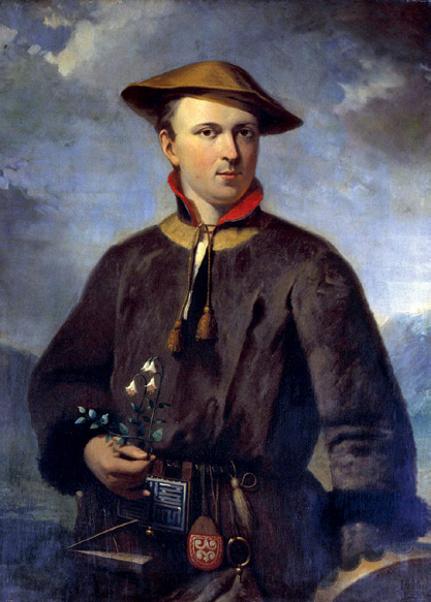
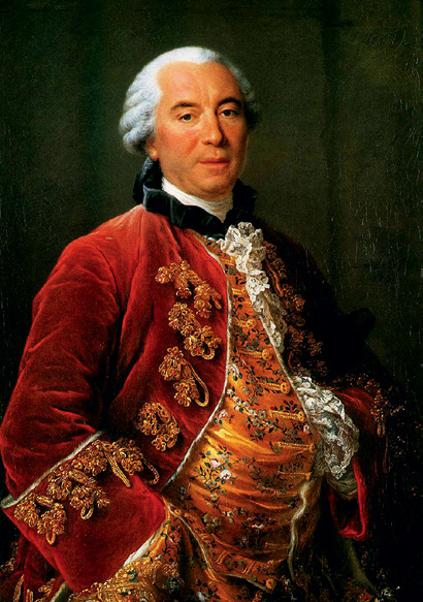
Ark as the floodwaters receded, progressively uncovering lower and lower levels of land. Linnaeus recorded in what type of environment each species was found, and so began what we now call ecological biogeography. He also recorded whereabouts in the world each species is found, but he did not synthesize these observations into any account of faunal or floral assemblages of the different continents or regions.
The first person to realize that similar environments, found in different regions of the world, contained different groupings of organisms, was the French naturalist Georges Buffon (Figure 1.1b); this important insight has come to be known as Buffon’s Law. In various editions of his multivolume Histoire Naturelle [2], published from 1761 onward, he identified a number of features of world biogeography and suggested possible explanations. He noted that many of the mammals of North America, such as bears, deer, squirrels, hedgehogs and moles, were found also in Eurasia, and he pointed out
that they could only have travelled between the two continents, via Alaska, when climates were much warmer than today. He accepted that some animals, such as the mammoths, had become extinct. Buffon also realized that most of the mammals of South America are quite different from those of Africa, even though they live in similar tropical environments. Accepting that all were originally created in the Old World, he suggested that the two continents were at one time adjacent and that the different mammals then sought out whichever area they found most congenial. Only later did the ocean separate the two continents and the two now‐different faunas, while some other differences might have been due to the action of the climate. Buffon also used the fossil record to reconstruct a history of life that clearly had extended over at least tens of thousands of years. Only the last part had witnessed the presence of human beings, and included earlier periods within which tropical
(a) (b)
Figure 1.1 Portraits of (a) Carolus Linnaeus (1707–1778) and (b) Georges Buffon (1707–1788). Source: Alamy Stock Photo.
life had covered areas that are now temperate or even subarctic.
Buffon felt strongly that one had to be guided by study of the facts, and this conviction drove him to accept that geography, climate and even the nature of the species were not fixed, but changeable, and to suggest that continents might move laterally and seas encroach upon them. That was a truly courageous and visionary deduction to make in the late 18th century. So Buffon recognized, commented upon and attempted to explain many phenomena that other, later, workers either ignored or merely recorded without comment. His observations on the differences between the mammals of the two regions were soon extended to land birds, reptiles, insects and plants.
Buffon is rightly regarded as a towering figure in the early history of biogeography.
The Distribution of Life Today
As 18th‐century explorers and naturalists revealed more and more of the world, so they also extended the horizons of biogeography itself, discovering a greater diversity of organisms. For example, in his second voyage around the world in 1772–1775, the British navigator Captain James Cook took the German Johann Reinhold Forster, together with his son Georg
Forster (Figure 1.2a), who collected thousands of species of plants, many of them new to science. Forster found that Buffon’s Law applied to plants as well as to animals, and also applied to any region of the world that was separated from others by barriers of geography or climate [3]. He also realized that there are what we now call gradients of diversity (see Chapter 4), there being more plant species closer to the equator, and progressively fewer as one moves toward the poles, and he made the first observations of island biogeography.
The concepts of ecological biogeography, botanical regions and island biogeography had, then, all been recognized by the end of the 18th century. But it was still generally accepted that there could be little or no change in the nature of each species, or in the pattern of the geography of the world. The early naturalists, therefore, still struggled to explain how all these different floras had come into existence, widely scattered over the Earth’s surface. Perhaps the most plausible explanation was that of the German botanist Karl Willdenow, who in 1792 suggested that, although there had been only one act of creation, it had taken place simultaneously in many places. In each area, the local flora had been able to survive the Flood by retreating to the mountains, from which it was able later to spread downward to recolonize its own part of the world as the floodwaters receded. His book also included a chapter on
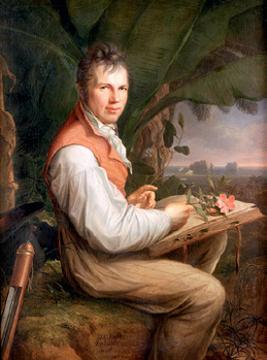
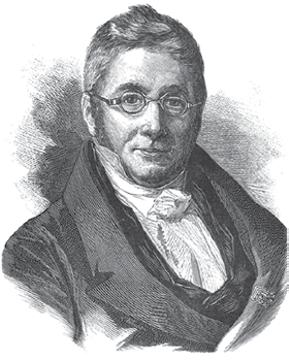
1.2 Portraits of (a) Johann Forster (1729–1798) and his son Georg (1754–1794), (b) Alexander von Humboldt (1769–1859) and (c) Augustin de Candolle (1778–1841). Source: Alamy Stock Photo.
Figure
the history of plants, and he noted that plants’ growth habits were related to the conditions of their environment.
The German Alexander von Humboldt (Figure 1.2b) is recognized as the founder of plant geography. Humboldt first became famous for his 1799–1804 expedition to South America, during which he climbed to over 5800 m on the volcano Chimborazo – a world height record that he held for 30 years. He noticed that the plant life on the mountain showed a zonation according to altitude, much like the latitudinal variation that Forster had described. Plants at lower levels are of tropical type, those of intermediate levels are of temperate type, and finally arctic types of plant are found at the highest levels. (Humboldt used the term association to describe the assemblages of plants that characterized each of these life zones; today, they are more commonly referred to as formations or biomes; see Chapter 3.) He was the first to insist that biological observations had to include detailed, accurate and precisely recorded data, and also the first to realize that the world is divided into a number of natural biogeographical regions, each with its own distinctive assemblage of animals and plants. Humboldt published a thorough account of his botanical observations in 1805, as part of a 30‐volume series recording his findings in the New World [4]. Finally, he was far ahead of his time in viewing the Earth as one great living organism, seeing nature as a whole, and humanity as part of that whole, which he published as a huge five‐volume work entitled Cosmos. He was truly a giant among early botanists and biogeographers.
Another early plant biogeographer was Augustin de Candolle of Geneva (Figure 1.2c) who in 1805, together with Lamarck, published a map showing France divided into five floristic regions with different ecological conditions. Candolle later went on to study the dispersal of plants by water, wind or the actions of animals, pointing out that this would lead to the plants spreading until they encountered barriers of sea, desert or mountains. He was also the first to realize that another limiting factor was the presence of other plants that competed with them. The result of these processes would be the appearance of regions that, although they might contain a variety of climatic zones and ecological environments, were distinct from one another
because they contained plants that were restricted to that area, for which he coined the word ‘endemic’ (see Chapter 2). The distinctions between these regions were thus partly dependent on their histories. Candolle went on to define 20 such regions, of which 18 were continents or parts of continents, and two were island groups [5]. He also noted that some plants had apparently worldwide distributions, that species pairs are to be found in Europe and North America, and that some taxa are found in both the north and the south temperate regions (what we now call bipolar distributions). Finally, he realized that other plants have strangely ‘disjunct’ distributions (see Chapter 2) in locations that are widely separated from one another, such as the Proteas of southern Africa and Australia/ Tasmania. Candolle also commented on Forster’s contributions to island biogeography.
All in all, Candolle made a massive and varied intellectual contribution to the botany of the early 19th century. However, he did not provide any world maps to illustrate these concepts, and most of the maps that botanists published in the later 19th century, and even in the 20th century, continued to be primarily ‘vegetation maps’ –maps of the relationships of the vegetation to temperature and climate. So, although the Danish botanist Joakim Schouw was the first to classify the world’s flora and show the results on maps [6], these were mainly the distribution maps of particular groups of plants, rather than maps of regional floras. August Grisebach’s more detailed, coloured map of 1866 was similarly a vegetation map. So all of these maps were primarily concerned with ecological biogeography, rather than with systematic studies of the distribution of organisms, which would have demanded an historical explanation. But then, it was only after biologists had become convinced of the reality of evolution that they could start to integrate into their thinking the consequences of a fourth dimension – time.
During the late 18th century, much of the leading work on biological and geological subjects had been carried out in areas of Europe
that we now call Germany, but the French Revolution of 1789 led to a flowering of French science. To some extent, this was because the power of the Church, with its conservative influence on the generation and acceptance of new ideas, had been decisively broken. But the new government also carried out a complete reorganization of French science, centred on the new National Museum of Natural History and liberally supported by the state, which became a powerhouse of ideas and debate in Europe. One of those employed in this new museum was Jean‐Baptiste Lamarck (Figure 1.3a). As an older worker, he had been brought up to believe that there was some underlying pattern and structure to every aspect of the physical and biological world – a mind‐set common to many 18th‐century inquirers into the phenomena of nature. It should therefore be possible to recognize a ‘scale of beings’ in which different groups of organisms could be allocated to ‘lower’ or ‘higher’ places according to the level of ‘perfection’ of their organization – with, of course, human beings at the apex of the resulting structure! In 1802, Lamarck suggested that the ‘lower’ organisms might also be found earlier in time and that they might gradually change into the ‘higher’ forms, due to an ‘inherent tendency of life to improve itself’ [7]. So there was no need to suggest that fossil organisms were in reality extinct, for it was
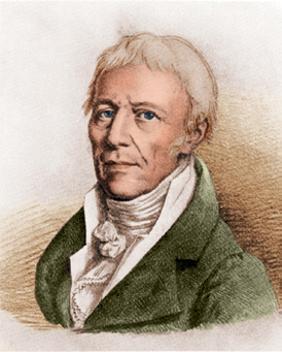
possible that they had evolved into different and perhaps still‐living descendants.
All of this was strenuously opposed by one of the new, young appointees in the museum, the great Georges Cuvier (Figure 1.3b), who founded the science of comparative anatomy. Cuvier used this new branch of science to prove that such great fossil mammals as the mammoths of Europe and North America and the giant ground sloth of South America, as well as many others, belonged to quite different species from those of today and were extinct [8]. But, he believed, his detailed anatomical studies showed that even these creatures had been thoroughly and stably adapted to their environment. Their extinction must therefore have been due to a sudden catastrophic change in their environment. So, to Cuvier, Lamarck’s theory of continual transformation was deeply unacceptable, for its suggestion that organisms were flexible and changeable challenged his own conviction that they were, on the contrary, irrevocably adapted to their existing environment. Cuvier was therefore opposed to Lamarck’s views because they cast doubt on his belief in extinction (which was, perhaps, understandable). But this unfortunately also led him to reject the whole idea of evolution that Lamarck had championed – so throwing out the baby of evolution with the bathwater of extinction.
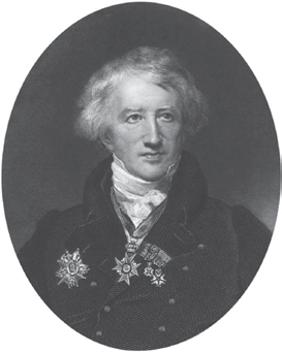
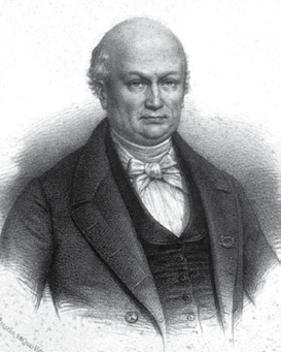
(a)
(b)
(c)
Figure 1.3 Portraits of (a) Jean‐Baptiste Lamarcke (1744–1829), (b) Georges Cuvier (1769–1832) and (c) Étienne Geoffroy St Hilaire (1772–1844). Source: Alamy Stock Photo.
It is always very convenient if, in an argument, your opponent’s views are championed by someone else of lesser ability. Lamarck’s ideas were supported by another worker in the museum, Étienne Geoffroy St Hilaire (Figure 1.3c). Over the years 1818–1828, Geoffroy suggested evolutionary homologies and links between such widely different animals as fish and cephalopods (octopus, squid, etc.) [9], but his ideas were ridiculed by other zoologists. Similarly, his supposed evolutionary sequences of fossils placed them in an order that was contradicted by the sequence of the rocks in which they were found. So it was easy for Cuvier to make a devastating attack on Geoffroy, and this had the effect of also discrediting Lamarck and the whole idea of evolution. In England, the case for evolution was further damaged in 1844, when the Scottish journalist Robert Chambers published a book, Vestiges of the Natural History of Creation [10], which contained astonishingly ignorant ideas. Chambers suggested, for example, that the bony armour of early fossil fishes was comparable to the external skeleton of arthropods (lobsters, crabs, insects, etc.) and that the fish might therefore have evolved from them. The progressively more detailed fossil record that was by then being revealed also gave no hint or indication that the major groups of organisms, traced back in time, converged toward a common, ancient ancestor. The fact that such people as Geoffroy and Chambers supported the idea of evolution unfortunately gave the impression that it was associated with the lunatic fringe of science. And, by now, Lamarck’s explanation of evolution as due to an ‘inherent tendency’ seemed dreadfully old‐fashioned.
When the geologist Robert Jameson translated Cuvier’s ideas into English in 1813, he added notes suggesting that the most recent of Cuvier’s continent‐wide catastrophes could be interpreted as the biblical Flood. But Cuvier himself, and other scientists working in post‐Revolutionary France, accepted that science and religion should not interfere in each other’s affairs. Matters were very different in England. There, the Church of England had become closely integrated into the power structure of a still‐hierarchical Establishment, and entry to the universities (and so to the professions) was
barred to non‐Protestants. So both the authorities of the state (monarchy, aristocracy and wealthy landowners) and those of the Church (bishops and comfortable clergy) felt themselves threatened by the new‐model social order of France, which they saw as encouraging a rising tide of atheism, republicanism and revolution. In the first half of the 19th century, English society was undergoing fundamental changes, fuelled by unemployment resulting from the end of the Napoleonic Wars and by the Industrial Revolution, which was driving people from the land and into overcrowded cities. In this conflict, the new ideas of evolution became a weapon that the rising middle class used in their attempts to gain entry to the universities and access to the professions and financial security. In response, to defend their own positions, the establishment portrayed evolution as atheistic, or even heretical.
Enter Darwin – and Wallace
So, in the early 19th century, evolution was seen as a slightly disreputable idea that also had links with a dangerously anarchic approach to the structure of society. It is therefore not surprising that the young Charles Darwin (Figure 1.4a) was cautious, secretive and reluctant to publish his ideas when he began to suspect that the problems he found in trying to interpret the patterns of life could only be explained by invoking evolution. He was the son of a fairly wealthy country doctor, whose father had been an atheist who believed in evolution – so the family was not exactly mainstream. As a student at Cambridge, Darwin had become interested in geology and natural history, and in 1831 he was invited to join the crew of a government ship, HMS Beagle, to act as a companion to the captain and also as a naturalist for what became a 6‐year voyage to survey the coasts of South America [11]. Several experiences during this long voyage led him to wonder whether the idea of evolution might not, after all, contain some truth.
On the Galápagos Islands in the Pacific, isolated from South America by 960 km of sea, Darwin noticed that the mockingbirds on three islands were different from one another,
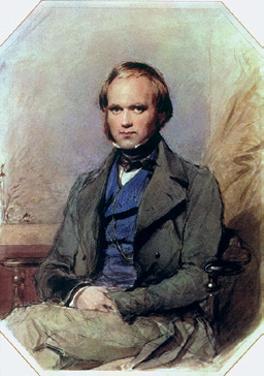
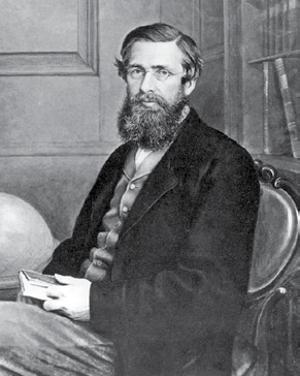
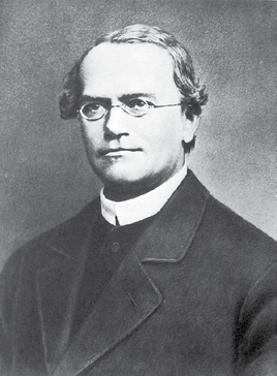
suggesting that they had independently become different varieties on each island. He was told that the giant tortoises of the different islands had differently shaped shells. Darwin also noticed great flocks of finches, with a variety of sizes of beaks, but they all fed together, and he could not make up his mind whether they were divided into different varieties. (Only later, when Darwin’s collections were studied back in England by the ornithologist John Gould was it realized that there appeared to be 13 different species of finch in the islands.) All of this suggested that species were not, perhaps, quite as unchanging as was then assumed. Equally disturbing were the fossils that Darwin had found in South America. The sloth, armadillo and guanaco (the wild ancestor of the domesticated llama) were represented by fossils that were larger than the living forms, but were clearly very similar to them. Again, the idea that the living species were descended from the fossil species that had existed in the same part of the world was a straightforward explanation, but one that contradicted the view that each species was a fixed, unchanging product of creation and had no blood relationship with any other species.
Darwin was not the first to suggest that organisms were related to one another by evolution; the British zoogeographer Alfred Russel Wallace (Figure 1.4b) was thinking along
exactly the same lines. (In fact, Wallace was the first to realize and publish the significant fact that closely related species were often also found close to one another geographically, with the clear implication that the two were linked by an evolutionary process.) In the end, it was the receipt of a letter from Wallace, then working in the East Indies, that stimulated Darwin to finalize and publish his ideas after many years of agonizing over its possible hostile reception by the vociferously antievolutionary sections of British society. (It is interesting to note that, in the case of both workers, it was observation of the patterns of distribution of individual species of animal, i.e. their biogeography, that led them to consider the possibility of evolution.) Their great discovery was to deduce the driving mechanism of evolution –natural selection.
Any pair of animals or plants produces far more offspring than would be needed simply to replace that pair. There must, therefore, be competition for survival among the offspring. Furthermore, these offspring are not identical to one another, but vary slightly in their characteristics. Inevitably, some of these variations will prove to be better suited to the mode of life of the organism than others. The offspring that have these favourable characteristics will then have a natural advantage in the competition of life and will tend to survive at the expense of
(a)
(b)
(c)
Figure 1.4 Portraits of (a) Charles Darwin (1809–1882), (b) Alfred Russel Wallace (1823–1913) and (c) Gregor Mendel (1822–1884). Source: Alamy Stock Photo.
their less fortunate relatives. By their survival, and eventual mating, this process of natural selection will lead to the persistence of these favourable characteristics into the next generation. (More detail on how this takes place is given in Chapter 6.)
The idea of natural selection was announced by short papers from both Darwin and Wallace, read at a meeting of the Linnean Society of London on 30 June 1858, and Darwin quickly went on to publish his great book the next year [12]. There can be no doubt that Darwin has to share with Wallace the credit for identifying natural selection as the mechanism of evolution and for the patterns of biogeography as evidence for evolution. However, the lion’s share of the credit for the almost immediate acceptance of the reality of evolution has to be given to Darwin and his book On the Origin of Species. Darwin had spent the 40 years after his return from the voyage of the Beagle in detailed research on many other areas of biology that provided evidence for evolution and published this research in 19 books and hundreds of scientific papers. The essentials of this work were given in his great book (which sold out immediately on publication and had to be reprinted twice in its first year) and were far more convincing in their variety and detail than the short papers read to the Linnean Society.
Darwin’s theory of natural selection was extremely logical and persuasive. His studies on the ways in which animal breeders had been able to modify the anatomical and behavioral characteristics of dogs and pigeons provided a neat parallel to what he believed had happened in nature over long periods of time, and were even more convincing. But, said his critics, all these different breeds of dog or pigeon were still able to breed with one another, which did not support Darwin’s suggestion that this was the way in which new species could appear. Nor could Darwin provide any explanation of precisely how the different characteristics were controlled and passed from generation to generation. In fact, the outlines of the ways in which all this took place had been discovered by the Austrian monk Gregor Mendel (Figure 1.4c) in 1866, but his work remained unnoticed until the beginning of the next century. So, our modern science of genetics was still a closed book. Also, Darwin did not understand the nature of
species. It was generally assumed at that time that each species was innately stable and resisted innovation – which would have impeded the action of natural selection in trying to alter its characteristics. In fact, we now know that the continual appearance of changed characters or ‘mutations’ (see Chapter 6) would quickly alter the nature of any species, and it is only the continual action of natural selection in weeding out most of these that gives the species the appearance of unchanging stability.
Another problem for Darwin was that most people believed that the Earth was only a few thousand years old. This was partly because some theologians considered that passages in the Bible could be interpreted as indicating that it had only been created some 8000 years ago – and, perhaps more fundamentally, also because few people could even imagine the enormous periods of time that were in fact required for evolution to take place. However, the British geologist Charles Lyell argued that many lines of evidence suggested that the Earth must be many millions of years old [13]. These included the evidence that sea levels had changed greatly over time, the presence of marine fossils at high levels in the mountains, the presence of tropical deposits such as coals or desert sandstones in what are now temperate regions and, even more dramatically, the time required to raise such great mountain chains as the Himalayas, Rockies or Andes. But this argument was weakened by the work of the physicist J. J. Thompson who, basing his work on calculations of estimates of the rate of cooling of the Earth from an original molten state, eventually concluded that it was less than 10 000 years old. He was unaware, of course, of the fact that much of the Earth’s continuing warmth comes from radioactivity, for this was only discovered in the 20th century, leading to the eventual realization that the Earth is several billion years old. So, like any scientist, Darwin was a child of his time, unaware of future discoveries that might have explained his difficulties.
Despite these difficulties, the concept of evolution, and of natural selection as its mechanism, was very quickly accepted and is now a part of the basic philosophy of biological science. Just as the theory of plate tectonics is the central paradigm of the earth sciences (see






















